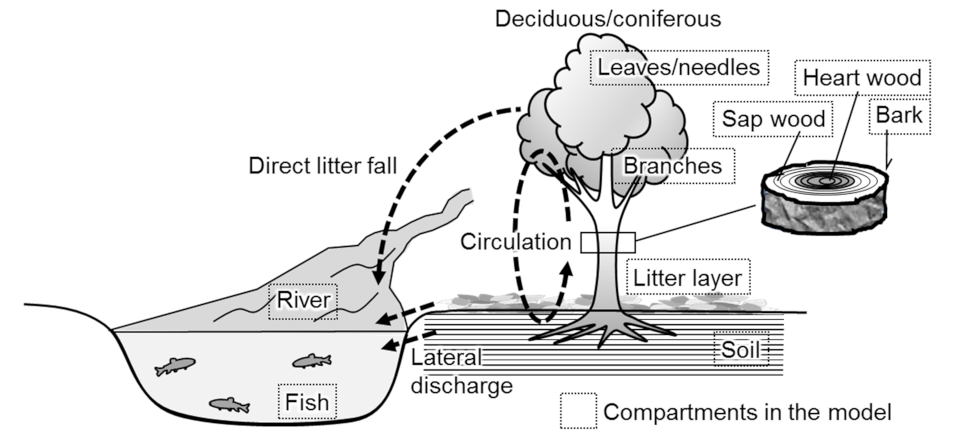Numerical study of transport pathways of 137Cs from forests to freshwater fish living in mountain streams in Fukushima, Japan
Published:

Abstract
The accident at the Fukushima Dai-ichi Nuclear Power Plant in 2011 released a large quantity of radiocesium into the surrounding environment. Radiocesium concentrations in some freshwater fish caught in rivers in Fukushima Prefecture in October 2018 were still higher than the Japanese limit of 100 Bq kg-1 for general foodstuffs. To assess the uptake of 137Cs by freshwater fish living in mountain streams in Fukushima Prefecture, we developed a compartment model for the migration of 137Cs on the catchment scale from forests to river water. We modelled a generic forest catchment with Fukushima-like parameters to ascertain the importance of three export pathways of 137Cs from forests to river water for the uptake of 137Cs by freshwater fish. The pathways were direct litter fall into rivers, lateral inflow from the forest litter layer, and lateral transfer from the underlying forest soil. Simulation cases modelling only a single export pathway did not reproduce the actual trend of 137Cs concentrations in river water and freshwater fish in Fukushima Prefecture. Simulations allowing a combined effect of the three pathways reproduced the trends well. In the latter simulations, the decreasing trend of 137Cs in river water and freshwater fish was due to a combination of the decreasing trend in the forest leaves/needles and litter compartments, and the increasing trend in soil. The modelled 137Cs concentrations within the forest compartments were predicted to reach an equilibrium state at around ten years after the fallout due to the equilibration of 137Cs cycling in forests. The model suggests that long term 137Cs concentrations in freshwater fish in mountain streams will be controlled by the transfer of 137Cs to river water from forest organic soils.
H. Kurikami, K. Sakuma, A. Malins, Y. Sasaki & T. Niizato
Journal of Environmental Radioactivity 208-209, 106005 (2019)
DOI: 10.1016/j.jenvrad.2019.106005
PDF: download
